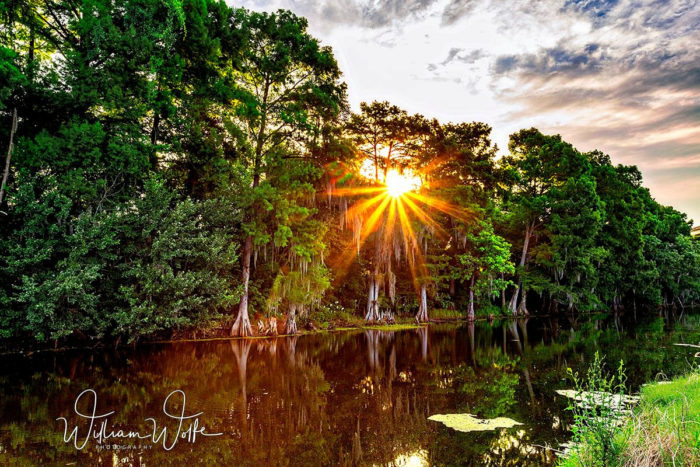To Tame a “Hellcat”
by Bill Wolfe
The subject for this article is Academy’s M-18 “HELLCAT”. While I don’t intend this to be a construction article, I would be remiss if I didn’t point you in the direction of a build-up article and review in the October 1997 issue of “Finescale Modeler.” The reviewer, Ron Poniatowski, makes mention of a few construction issues with this kit. Most notable among these is the loose fit of the main gun.

While my example went together fairly well, I did have a problem with the turret halves being warped. It made it tough to get them lined up properly. The fit of the turret to the upper hull was also very interesting as it would not fit down and turn as I am used to with a Tamiya kit. As this model has a complete interior,
I didn’t want to force the turret and risk dislocation of any parts that would now not be easily reattached, so I removed the ‘pegs’ on the bottom of the turret and just glued it in place. The vehicle is bound for a diorama, so I turned the turret to allow the interior to be viewed, as I know the position it will be placed in when in it’s final setting
This is primarily an article about painting this vehicle, so let’s get started. This little guy didn’t just get hit by a German 88, it’s just got a base coat of Humbrol Matte 66 (olive drab). The interior has already been built and painted at this point so it must be masked off to avoid olive drab over-spray.

To accomplish this I made a disk of sheet styrene by measuring the opening and then using a compass to plot out the disk shape. I then carefully cut out the shape and fixed it with white glue. The hatches were masked off with tape from the inside. This process was made easier by having the turret left off the model.
The ‘cloud’ pattern has been used to add a highlight and a somewhat faded look to the paint. This color is Humbrol matte 150 (forest green….I think). When painting the ‘cloud’ pattern I use my double action airbrush and thin the paint a bit more than usual.
I also paint with a lower pressure than normal (about 7-10 PSI) This made sound strange, but if you’ve never tried this method, rest assured that you’re going to be painting so close to the model that you’ll be glad that the air pressure is lower than normal.

Start up the airbrush, load up the paint, and test the spray pattern on some scrap stock. I use cardboard. You’re looking to be able to spray a ‘dot’ about the size of between 1/8 and 1/4 of an inch
The model looks a bit rough at this point, but don’t despair. When we start with the wash and drybrushing, it will start to look much better. Remember that at this stage all the colors are ‘raw’. Some builders will stop here, but with experience, one starts to see that the model needs more work to look weathered and realistic.
This is where things started to get a bit tricky and where the ‘HELLCAT’ started to earn it’s name. After all the colors had been painted, it was time to think about a wash to bring out the raised details and enhance the shadows. Before a wash can be put on the model the paint has to be protected. I sealed the M-18 with a couple coats of Testors ‘Dull-coat’ and allowed this to dry for four days. Yes, I waited four days to mess-up this model!! I have no idea what happened, but when I applied the wash of Humbrol 33 matte black and mineral spirits to the model, it looked pretty good at first. Then an hour or two later: Disaster!
The wash had crazed the plastic, turning the paint a patchy white in spots. Have no fear! The mark of a seasoned model builder is the ability to cover up these little mishaps. I reached for my trusty water-based wash made of black craft paint and what else – WATER! I added to this a drop of dish washing liquid to help the paint/water mixture flow, and went to town

As luck would have it, this method seemed to get rid of the white crazed look, both from the model and my face. Now, you won’t read in many places – where a builder admits to having a foul up like this – but believe me, they do! Make no mistake, I was prepared to strip the whole model down and start over if I had to. I’ve done it in the past and probably will have to do I it again in the future. That’s why they make paint remover.
My favorite paint for drybrushing is Humbrol 72 matte khaki drill. It’s not such a stark contrast as a white would be, but it helps to define the edges and raised details very well. At this stage you’re ready add the decals. Before decals can be added, you MUST first apply a gloss clear to your model. If there were only one or two decals to be added you could instead buff the areas where they were to be placed, but this model has about as many as any other armor subject out there.

The best bet is to spray gloss over the whole thing. I guess I’m spoiled by the decals in Tamiya kits, but I didn’t find these decals very ‘user friendly’. One of the vehicle numbers tore when I tried to slide it and had to be replaced with a dry transfer.
All in all, I enjoyed building this model. But Hey! Any day spent building a model is better than a day spent at work!!!
Photos by Bill Wolfe
